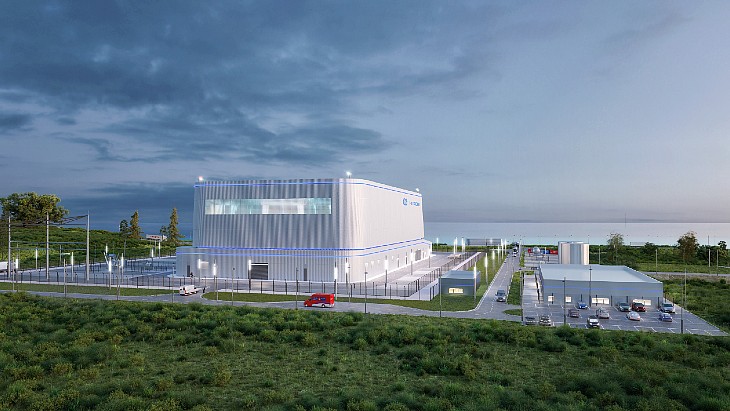GE Hitachi Nuclear Energy has signed memorandums of understanding with Aecon, AtkinsRéalis, Jacobs and Laing O’Rourke as part of its preparations in the UK’s on-going small modular reactor selection contest.

The UK aims to grow nuclear energy capacity to 24 GW by 2050, with a mix of traditional large-scale power plants and small modular reactors (SMRs). Last year, the Great British Nuclear arms-length body, set up to help deliver that extra capacity, began the selection process for which SMR technology to use. There are now five left – GE Hitachi Nuclear Energy (GEH), Holtec, NuScale Power, Rolls-Royce SMR and Westinghouse – who have been invited to bid for UK government contracts in the next stage of the process.
A further trimming of the shortlist is expected within weeks, with the possibility of the successful technology provider(s) being selected by the end of the year.
GE Hitachi (GEH) UK country leader Andy Champ, said: “These MoUs underscore our desire to work closely with the UK nuclear supply chain as the SMR competition progresses. Given our BWRX-300 reactor is planned for deployment in Canada, collaborating with best-in-class experts across the industry puts us in an even stronger position to reliably deliver this technology for the best value for money. It also furthers our confidence in our ability to work with Great British Nuclear to bring our SMR technology to market.”
Aecon is providing construction services for the Canadian deployment of the GEH SMR at Ontario Power Generation’s Darlington site, where construction is expected to start in 2025 – AtkinsRéalis is architect and engineer for the project. The memorandum of understanding (MoU) signed with each company is intended to leverage lessons from that project.
GEH said its agreement with Jacobs “can facilitate best-in-class design capabilities tailored to the UK environment”, while the one with UK-based Laing O’Rourke “will see it support the development of the programme, drawing on its sector leading knowledge of modern methods of construction”.
Thomas Clochard, Executive Vice President, Nuclear & Civil, Aecon Group, said: “Aecon is at the forefront of advancing the energy transition, including through nuclear power, as the Canadian constructor of North America’s first grid-scale SMR – building the first-of-a-kind GEH BWRX-300 SMR … Aecon is proud to bring its full spectrum of nuclear construction and project management services, as well as unique fabrication and execution solutions to support the future deployment of SMRs in the UK working with GEH, Great British Nuclear and our partners.”
Joe St Julian, President, Nuclear, AtkinsRéalis, said: “AtkinsRéalis has been working closely with GEH and our partners at Darlington to deliver the first commercial, land-based SMR in the western world … we look forward to leveraging our experience at Darlington and bringing our broader knowledge and experience in new nuclear build programmes to ensure GEH’s nth-of-a-kind UK project delivers efficiently and safely.”
Dawn James, Jacobs Vice President, said: “We will assist GEH to build relationships of trust with government and regulators, de-risk the programme and secure the GDA statements on time. We have held trusted supplier status on all major UK nuclear licensing applications since 2007, drawing on a deep understanding of both the GDA process and the associated site-specific regulatory requirements for new nuclear power stations.”
Allan Gregory, Laing O’Rourke’s Nuclear Delivery Director, said: “We are delighted to be working with GEH to support its plans to deploy its BWRX-300 small modular reactor in the UK. We will harness our knowledge of modern methods of construction, as well as our established supply chain partnerships, to provide delivery certainty for GEH’s technology.”
The timeline
In an interview earlier this year for the World Nuclear News podcast, GBN Chairman Simon Bowen said the planned timeline was for the SMR selection shortlist to be cut to around four after the submission of responses to the tender, with the goal of placing contracts by the end of the year with two or three technology providers – this would be for co-funding the technology all the way through to completion of the design, regulatory, environmental and site-specific permissions process, and the potential to place a contract for the supply of equipment.
Each selected technology would have an allocated site with the potential to host multiple SMRs. The aim is then for a final investment decision to be taken in 2029.

